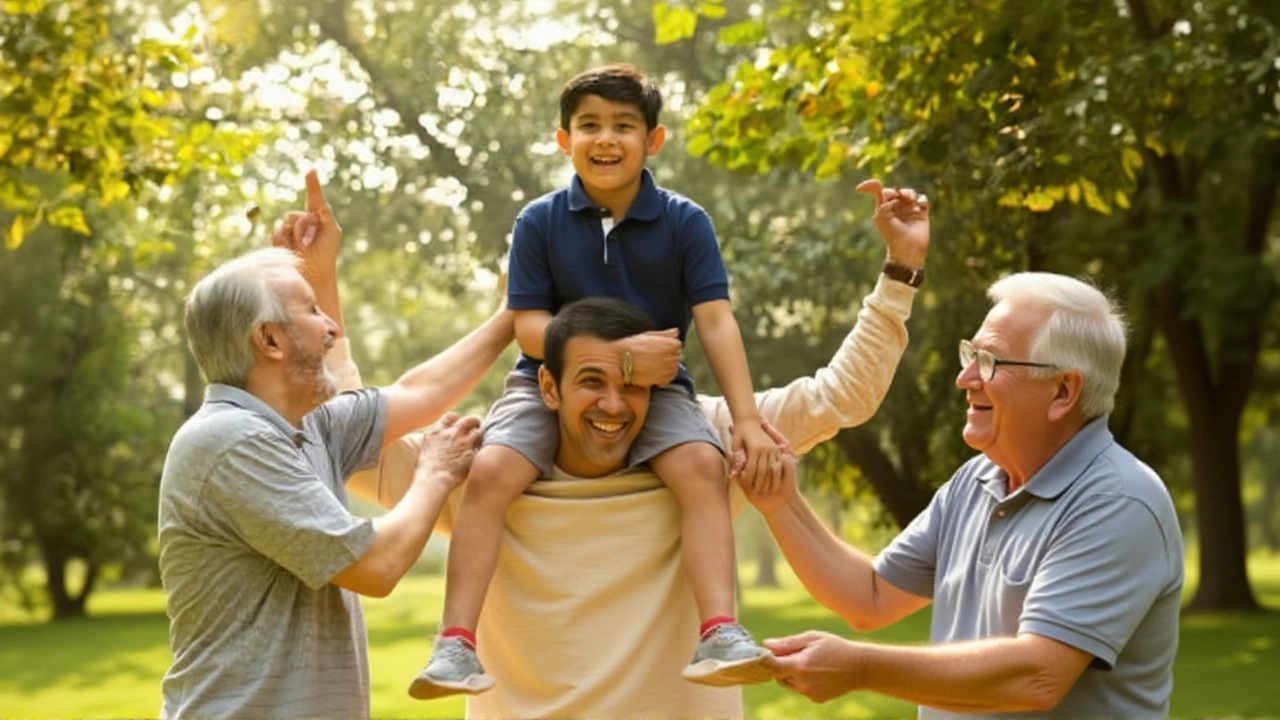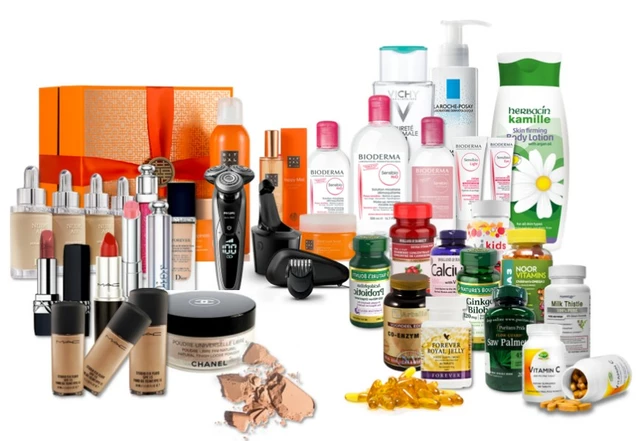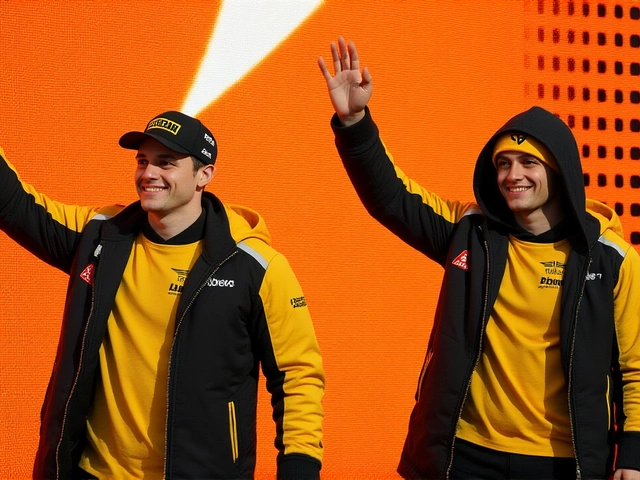On Wednesday, November 19, 2025, the world will observe International Men's Day under the theme Celebrating Men and Boys — a call not just to recognize male contributions, but to redefine what those contributions look like in the 21st century. The Advertising Standards Authority (ASA), the UK’s independent ad regulator based in London, has dropped new guidelines just days before the observance, urging marketers to ditch tired tropes and embrace nuanced portrayals of men as caregivers, emotional beings, and equals — not just breadwinners or jokesters. The move signals a quiet but powerful shift in how society is beginning to talk about masculinity — not as a problem to fix, but as a story to retell.
From Trinidad to the World: The Roots of a Movement
Dr. Jerome Teelucksingh, a history lecturer at the University of the West Indies in Trinidad and Tobago, launched International Men's Day in 1999. His goal? To spotlight the often-overlooked struggles men face — from higher suicide rates to societal silence around mental health — while honoring their quiet acts of service. It wasn’t an instant global phenomenon. For nearly a decade, it remained a regional observance, quietly growing in schools and community centers. Then, around 2007, something changed in India. Grassroots activists began using the day to spark conversations about fatherhood, emotional literacy, and the cost of toxic expectations. Today, it’s observed in over 80 countries.The ASA’s New Advertising Playbook
On November 13, 2025, the Advertising Standards Authority (ASA) released its official guidance, co-developed with the Committee of Advertising Practice (CAP). The message was clear: “Ads must not include gender stereotypes that are likely to cause harm, or serious or widespread offence.” But here’s the twist — they didn’t ban stereotypes outright. They banned implied permanence. A father changing a diaper? Fine. A mother scolding him for not doing it perfectly? That’s where the line gets drawn. The ASA cited a recent ad featuring a dad calmly fixing a broken vase while his sons played nearby. “It showed responsibility without making him the exception,” said a spokesperson. “It didn’t imply that mothers are the only ones who care about order. It just showed a man being human.” That’s the new standard: normalcy, not novelty.Six Pillars, One Message
The 2025 theme rests on six pillars — not as rigid boxes, but as open doors:- Honoring men who lead with kindness, not just authority
- Recognizing their roles in families, communities, and caregiving
- Advocating for men’s physical, mental, and emotional health
- Exposing discrimination men face — in custody courts, education, or workplace safety
- Promoting balanced gender relations, not competition
- Supporting boys to grow into men who feel safe being vulnerable
48 Hours of Connection
November 19 isn’t just a day — it’s the midpoint of a 48-hour cultural window. It follows Movember, the global men’s health fundraiser, and precedes International Children’s Day on November 20. The timing is intentional. “The bond between men and children isn’t just emotional — it’s generational,” says International Men's Day’s Sydney-based team. “When a father teaches his son to cry without shame, he’s not just raising a boy — he’s changing a culture.” The global live event, running from 3:00 PM to midnight AEDT in Sydney, will feature voices from Jamaica, Nigeria, Japan, and Canada. Even the Caribbean Military Academy Regiment joined in, posting on Instagram: “We don’t just train soldiers. We build men who serve with heart.”
What This Means for Everyone
This isn’t about canceling traditional masculinity. It’s about expanding it. A man who fixes a car can also hold his child after a nightmare. A father can be both strong and scared. The real enemy isn’t the stereotype — it’s the assumption that it’s the only option. The Economic Times of India put it best: “Celebrating men and boys is not about elevating one gender over another. It’s about understanding the systemic pressures men face — from the battlefield to the nursery — and encouraging them to embrace emotional honesty.”What’s Next?
The ASA plans to audit 2026 holiday ads for compliance. Meanwhile, schools in Australia and South Africa are rolling out new curricula focused on emotional intelligence for boys. And in Trinidad, Dr. Teelucksingh’s alma mater is launching a scholarship for young men pursuing mental health advocacy. It’s not a revolution. It’s a recalibration. And it’s happening one ad, one conversation, one quiet moment of vulnerability at a time.Frequently Asked Questions
Why does International Men's Day focus on men and boys when gender equality is the goal?
International Men's Day doesn’t seek to replace gender equality — it completes it. While many campaigns highlight women’s challenges, men face unique pressures: higher suicide rates, lower life expectancy, and stigma around seeking help. The day doesn’t pit genders against each other; it ensures no one’s struggles are invisible. As the ASA notes, true equality means addressing the full spectrum of gendered experiences — including those men are often silenced from discussing.
How do the ASA’s new guidelines affect everyday advertising?
The guidelines don’t ban traditional roles — like men as mechanics or women as nurses — but they forbid implying those roles are exclusive or natural. An ad showing a man changing a tire is fine. An ad showing him doing it while the woman stands by, arms crossed, judging him? That’s now flagged as potentially harmful. Brands must show flexibility: dads cooking, moms fixing cars, boys crying. The goal is representation without reinforcement of rigid norms.
What’s the connection between International Men's Day and Movember?
Movember, which runs all of November, focuses on men’s physical health — prostate cancer, testicular cancer, mental health. International Men’s Day, on November 19, expands that lens to include emotional, social, and systemic issues: fatherhood, workplace bias, education gaps, and cultural expectations. Together, they form a month-long call to action: check your health, talk about your feelings, and challenge outdated ideas about what it means to be a man.
Is this movement only relevant in Western countries?
Not at all. In India, men’s mental health initiatives have surged since 2020, with over 120 NGOs now running community dialogues. In Nigeria, church groups and sports clubs host “Men’s Circles” to discuss fatherhood. Even in Japan, where stoicism is culturally prized, younger generations are pushing back. The movement’s strength lies in its adaptability — it’s not imported; it’s locally rooted.
How can individuals participate beyond social media posts?
Start small: ask the men in your life how they’re really doing — and mean it. Support organizations that train men in emotional literacy. Challenge jokes that reduce men to “just a guy.” Encourage boys to express fear, sadness, or confusion without shame. The International Men's Day website offers free resources for parents, teachers, and employers. Real change happens in homes, not hashtags.
What role do advertising and media play in shaping masculinity?
Media doesn’t just reflect culture — it shapes it. For decades, ads portrayed men as emotionally detached, physically dominant, or comically inept at caregiving. That messaging conditioned generations. The ASA’s new rules are a corrective: if ads show men as complex, caring, and capable of growth, boys learn that’s normal. It’s not censorship — it’s curriculum. And it’s working. Brands using inclusive portrayals report 37% higher trust among young male consumers, according to a 2025 Kantar study.





